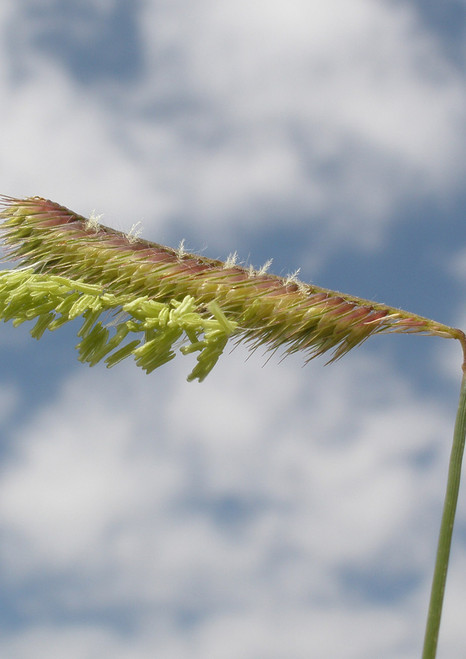Blue Grama forms a short 3 to 6 inch height grass that requires just 7 inches of water per year. If left unmown during the flowering period, the grass produces a beautiful 10 inch seed stem. Excellent stands can be readily established from seed. Because of its wide adaptation (all soil types, including alkaline soil) and ease of establishment, Blue Grama is used extensively as a water conserving grass. It makes an excellent lawn grass in sunny areas. In areas with loam and clay Blue Grama can be combined with Buffalograss and Curly Mesquite for diversity.
See our Native Sun Turf or Thunder Turf shortgrass kit for a ready-made combination especially suited for native shortgrass lawns.
Other mixes that contain Blue Grama include:
Prairie Starter Mix
Midway Mix
Western Rangeland Mix
Water Saver Kit
Native Trail Mix
Caliche Mix
Dam Slope Mix
The Natives are Friendly
The central plains of the United States are composed of short and tall grass prairies. Blue Grama makes up 75 to 90 percent of the grasses in these prairies. It is often found along side buffalo grass with Blue Grama dominating the sandier soils and buffalo grass the heavier clay soils. Blue Grama has gray-green foliage that slightly curls with tiny hairs hiding under the leaves. It is a warm season perennial that averages in height between 6 to 12 inches with a seed head that ranges from 7 to 18 inches. The seed heads look like crescent moons or human eyebrows perched on the end of the stem. These seed heads make Blue Grama an attractive accent plant in a garden or in a vase in a home.
With its low height, disease resistance, drought tolerance and aversion to fertilizer, Blue Grama is a natural must have ingredient for urban lawns. Any conservation conscious mind can see the benefits in using less water, no fertilizer and no pesticides. Mowing is totally optional depending on whether you want a smooth turf like lawn or a more naturalized look. The motion of delicate seed heads waving in the breeze can have a beneficial soothing effect on the viewer.
Blue Grama loves full sun and can survive on as little as 7 inches of rain a year. Periods of drought and cold temperatures are survived by going dormant. Its ability to cure well and retain most of its nutritional value makes it invaluable for winter grazing. This warm season perennial is one of the more desirable native range grasses because once established it can stand heavier grazing and has a more rapid growth rate in late spring than the other native grasses as well as being consumed by all classes of livestock. Whether the focus is urban or rural Blue Grama can be used to help restore the earth.

















